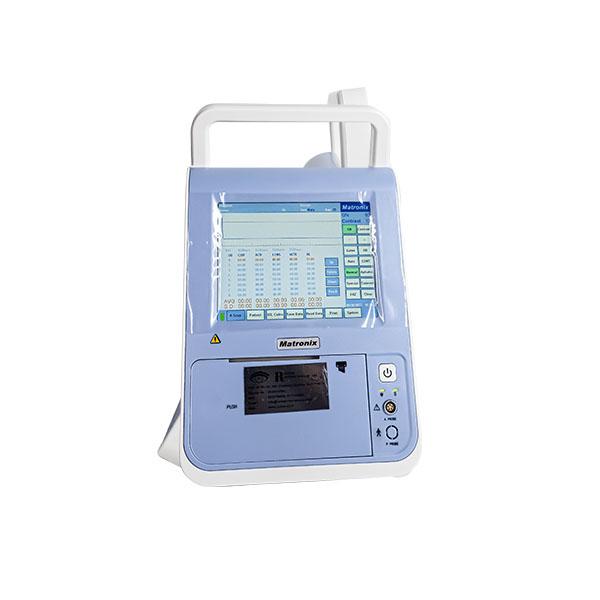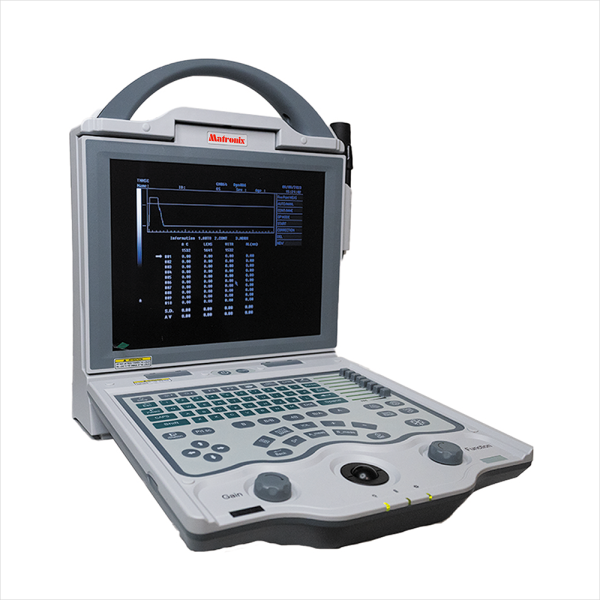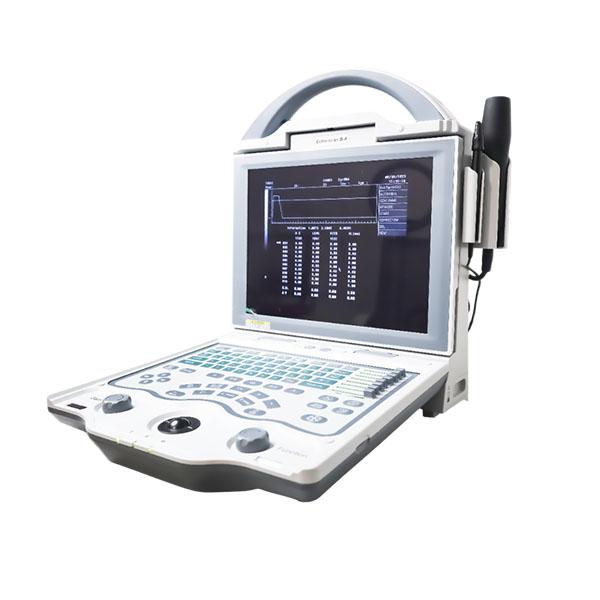A comprehensive ophthalmic diagnostic device that uses sound waves to assess the internal components of the eye is A/B Scan. It helps in diagnosing diseases including tumors, cataracts, and retinal detachment by providing precise measurements and images of the eye.
Comprehensive Ophthalmic Assessment with A/B Scan
An A/B Scan is an advanced ophthalmic machine that provides precise imaging and measurements of the inside structures of the eye using high-frequency sound waves, or ultrasound. In order to determine intraocular lens (IOL) power prior to cataract surgery, the A-Scan measures the eye's axial length. Meanwhile, the B-Scan creates two-dimensional cross-sectional scans that allow for the visualization of the retina, vitreous, optic nerve, and other internal ocular structures. This technology is particularly useful in situations when traditional inspection techniques are challenging because optical media, such as the cornea or lens, are opaque because of cataracts, trauma, or other disorders.
Initial examination, detection of retinal detachment, vitreous hemorrhage, tumors, foreign bodies, and evaluation of ocular injuries are all common uses for A/B scans in eye clinics, hospitals, and diagnostic facilities. Additionally, they help guide treatment approaches for complex eye problems, measure ocular dimensions for implanted lenses, and track the evolution of diseases. In ophthalmology, A/B Scans greatly improve clinical decision-making and patient care by offering accurate, non-invasive imaging and measurements.
Our High-Precision Ophthalmic Ultrasound Machines
When determining the intraocular lens (IOL) power prior to cataract surgery, the A-Scan is a vital ultrasound tool that precisely measures the eye's axial length. With a measurement range of 5–40 mm and an accuracy of ≤0.05 mm, it functions at a frequency of 10 MHz. Certifications from CE and ISO guarantee that it satisfies universal safety and quality requirements for clinical application.
The rear part of the eye, which includes the retina, vitreous, and optic nerve, can be seen in two dimensions using the B-Scan. It has a 12 MHz frequency, high-resolution imaging, and movable gain controls. It may be used in Orbit, Vitreous, and Retina diagnostic modes. It is CE and ISO certified, ensuring patient safety and dependable performance in ocular diagnostics.
Perfect for clinics and transportable establishments, the AB Scan R-002 integrates A-Scan and B-Scan features into a single portable instrument. It weighs 4.6 kg, runs on 100–240V AC, and has an easy-to-use interface for accurate real-time assessments. It is a reliable option for precise eye measurement and imaging because of its CE and ISO certifications, which guarantee fulfillment to worldwide quality standards.
Matronix Optotechnik: Suppliers of Reliable and Professional Eye Care Equipment
A reliable supplier of modern optical devices, Matronix Optotechnik offers professional-grade, CE and ISO-certified equipment, including a range of A/B Scans. Selecting us gives you access to machines that provide accurate diagnosis, lens verification, and improved patient care through accuracy, dependability, and user-friendly operation. We guarantee a smooth and beneficial experience for your optical practice by offering affordable pricing, prompt delivery, professional advice, and trustworthy after-sales service in addition to our high-quality products.
Frequently Asked Questions
An A/B Scan is a high-precision eye diagnostic device that uses ultrasound waves to create images and measurements of the eye’s internal structures. The A-Scan measures the eye’s axial length for intraocular lens (IOL) calculation, while the B-Scan provides two-dimensional imaging of the retina, vitreous, and optic nerve.
The A-Scan measures the axial length of the eye with high accuracy, which is essential for determining the correct intraocular lens (IOL) power before cataract surgery. This ensures patients receive optimal vision correction post-surgery.
A B-Scan is primarily used to visualize internal eye structures when the view is obscured by conditions like dense cataracts, trauma, or hemorrhage. It assists in diagnosing retinal detachment, tumors, vitreous hemorrhage, foreign bodies, and other ocular abnormalities.
The A-Scan provides one-dimensional measurements of eye structures, mainly used for IOL calculation, while the B-Scan produces two-dimensional cross-sectional images that help visualize and diagnose internal eye conditions.
The A-Scan operates at a 10 MHz frequency, with a measurement range of 5–40 mm and accuracy of ≤0.05 mm, ensuring precise results for clinical and surgical planning.
The B-Scan uses a 12 MHz probe for high-resolution imaging with adjustable gain controls. It supports diagnostic modes such as Orbit, Vitreous, and Retina, offering versatility and clarity for various eye conditions.
The AB Scan R-002 combines both A-Scan and B-Scan functionalities in a compact, portable design. It weighs just 4.6 kg, operates on 100–240V AC, and features an intuitive interface—making it ideal for clinics, hospitals, and mobile diagnostic setups.
Yes. All A/B Scan models from Matronix Optotechnik are CE and ISO certified, ensuring they meet international standards for quality, safety, and performance in ophthalmic diagnostics.



